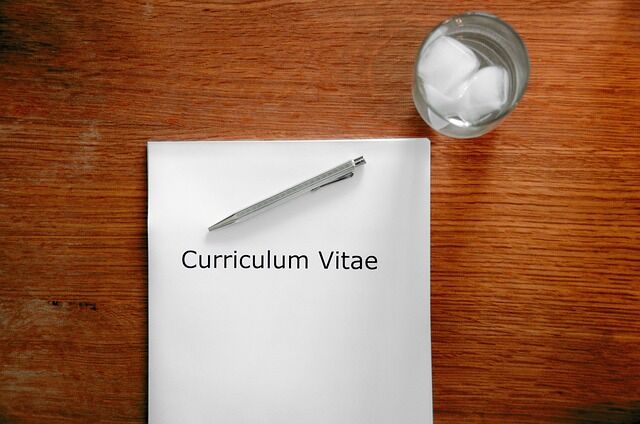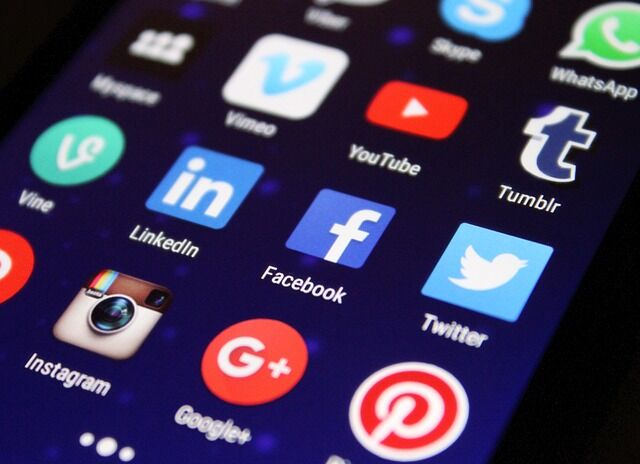Remember those old fairytales? Snow White, Cinderella, Jack and the Beanstalk? Sure, they’re classics, but let’s face it — they’re about as diverse as a loaf of white bread. For decades, children’s literature was stuck in a rut, churning out stories that mostly featured white, able-bodied characters living in a world that looked nothing like the one outside our windows. But here’s the thing: times are changing, and so are the books our kids are reading.
It’s about time, right? I mean, have you looked around lately? Our world is a beautiful tapestry of cultures, identities, and experiences. It’s high time our children’s books reflected that reality. So, grab a cup of coffee (or tea, if that’s your jam), and let’s dive into the colorful, sometimes messy, but always important world of inclusive representation in children’s literature.
The Bad Old Days: When Diversity Was a Four-Letter Word
Okay, maybe that’s a bit harsh. But seriously, if you crack open a kids’ book from, say, the 1950s or even the 1980s, you might be in for a shock. It’s like stepping into a time machine — and not in a cool, “Back to the Future” kind of way.
For the longest time, children’s literature was dominated by a pretty narrow view of the world. Most protagonists were white, middle-class, and living in picket-fence suburbia. If there were characters of color, they were often relegated to sidekick status or worse, portrayed through harmful stereotypes. Don’t even get me started on the lack of LGBTQ+ representation or characters with disabilities. It was like these huge swaths of human experience just… didn’t exist.
Why was this a problem? Well, imagine growing up never seeing yourself reflected in the stories you read. It’s like looking into a mirror and seeing… nothing. That’s a pretty heavy burden for a kid to bear. Plus, it didn’t do any favors for kids from majority groups either. How are you supposed to understand and empathize with different experiences if you’re never exposed to them?
But hey, enough doom and gloom. Let’s talk about how things are getting better.
The Times, They Are A-Changin’: Progress in the Pages
So, here’s some good news to brighten your day: we’re making progress! And I’m not just saying that to make you feel warm and fuzzy inside. There are actual numbers to back this up.
According to the Cooperative Children’s Book Center (CCBC), which has been tracking diversity in children’s books since 1985, we’ve seen a significant uptick in diverse representation over the past decade. In 2014, only about 11% of children’s books featured characters of color. By 2020, that number had jumped to around 30%. It’s not perfect, but it’s a heck of a lot better than it used to be.
And it’s not just about race and ethnicity. We’re seeing more books featuring LGBTQ+ characters, kids with disabilities, and diverse family structures. Take “Julian Is a Mermaid” by Jessica Love, for example. It’s a beautiful story about a boy who wants to dress up as a mermaid, challenging gender stereotypes in the gentlest, most affirming way. Or “El Deafo” by Cece Bell, a graphic novel that turns the author’s childhood experiences with hearing loss into a superhero adventure.
These books aren’t just ticking diversity boxes — they’re telling rich, nuanced stories that any kid can enjoy. And that’s the real victory here.
The Elephant in the Room: Challenges We’re Still Facing
Now, before we break out the champagne and declare mission accomplished, we need to talk about the challenges. Because, let’s be real, we’ve still got a long way to go.
First up: the numbers. Yeah, I know I just said they were improving, but 30% diverse representation is still a far cry from reflecting our actual society. And when you break it down by specific groups, some are still woefully underrepresented. Books featuring characters with disabilities, for instance, are still few and far between.
Then there’s the issue of who’s writing these stories. The publishing industry itself is still overwhelmingly white and middle-class. According to a 2019 survey by Lee & Low Books, about 76% of publishing staff, review journal staff, and literary agents are white. This lack of diversity behind the scenes can lead to problems with authenticity and sensitivity in how diverse stories are told.
And let’s not forget about accessibility. It’s great that we’re seeing more diverse books, but are they actually reaching the kids who need them most? Many schools and libraries, especially in underserved communities, struggle to keep their shelves stocked with the latest, most inclusive children’s literature.
Oh, and here’s a fun (read: not fun) twist: As diverse books have become more prevalent, they’ve also become targets. Some of the most challenged and banned books in recent years have been those featuring LGBTQ+ characters or addressing issues of race. It’s like for every step forward, someone’s trying to drag us two steps back.
#OwnVoices: Authenticity in Authorship
Alright, time for a quick language lesson. Have you heard of #OwnVoices? No, it’s not a new reality singing competition. It’s a movement in the publishing world that’s been gaining steam over the past few years.
The idea behind #OwnVoices is simple: stories about diverse characters should be written by authors from those same diverse groups. It’s about authenticity, folks. Who better to write about the experience of a young Black girl in America than someone who’s lived that experience?
This movement has given rise to some incredible literature. Take “The Hate U Give” by Angie Thomas, a powerful novel about a Black teenager who witnesses a police shooting. Thomas drew from her own experiences growing up in a predominantly Black neighborhood to create a story that feels raw and real.
Or consider “Front Desk” by Kelly Yang, based on the author’s childhood experiences as a Chinese immigrant helping her parents run a motel. These stories have a depth and nuance that might be hard to capture for someone writing outside their own experience.
But — and there’s always a but, isn’t there? — the #OwnVoices movement isn’t without its complications. Some argue that it can put undue pressure on authors to write only about their own identities, or that it can lead to pigeonholing of diverse authors. It’s a complex issue, and the debate is ongoing.
Spotlight on Success: Books That Are Getting It Right
Enough with the heavy stuff for a minute. Let’s talk about some inclusive children’s literature that are knocking it out of the park when it comes to representation. These are the kinds of stories that make you want to high-five the author and then read the book to every kid you know.
First up, “Hair Love” by Matthew A. Cherry. This picture book, which started as an animated short film, is all about a Black father learning to style his daughter’s natural hair. It’s sweet, it’s funny, and it celebrates Black hair in all its glory. Plus, the illustrations by Vashti Harrison are absolutely gorgeous.
For the middle-grade crowd, “New Kid” by Jerry Craft is a game-changer. This graphic novel about a Black boy navigating a predominantly white private school won the Newbery Medal in 2020 — the first graphic novel ever to do so. It tackles issues of race and class with humor and heart.
And let’s not forget “Wonder” by R.J. Palacio. This novel about a boy with a facial difference has sparked a whole “Choose Kind” movement and has been adapted into a major motion picture. It’s a powerful example of how books can foster empathy and understanding.
These books, and many others like them, aren’t just diverse for the sake of being diverse. They’re telling universal stories through specific lenses, and in doing so, they’re expanding our understanding of what it means to be human.
The Gatekeepers: Publishers, Libraries, and Schools
Okay, so we’ve got these amazing diverse books. But how do they actually get into kids’ hands? That’s where the gatekeepers come in — the publishers, librarians, and educators who decide which books make it onto shelves and into classrooms.
Publishers are starting to wake up to the demand for diverse books. Many have launched imprints specifically focused on diverse voices, like Kokila at Penguin Random House or Salaam Reads at Simon & Schuster. But there’s still work to be done in terms of diversifying staff and leadership within publishing houses.
Libraries and schools play a crucial role too. Many librarians have become fierce advocates for diverse books, creating displays and programs to highlight inclusive children’s literature. And some schools are revamping their curricula to include more diverse texts.
But here’s the rub: These institutions often face budget constraints and sometimes, sadly, political pressure. In some communities, efforts to introduce more diverse books have been met with pushback from parents or local officials who view these stories as “controversial.” It’s a reminder that the fight for representation isn’t just about writing and publishing diverse books — it’s also about defending their place on our shelves.
Crystal Ball Time: What’s Next for Inclusive Children’s Literature?
So, where do we go from here? If I had a crystal ball… well, I’d probably use it to peek at next week’s lottery numbers, let’s be honest. But in terms of children’s literature, I think we can make some educated guesses about the future.
First off, I believe we’ll continue to see an increase in diverse representation across the board. The demand is there, and it’s only growing. We’re likely to see more intersectional stories too — books that explore multiple aspects of identity at once.
Technology might play a bigger role. We’re already seeing some cool interactive e-books and apps that allow kids to customize characters’ appearances. This could be a game-changer for representation.
I also think we’ll see a push for more diversity in genres that have traditionally lacked it. Imagine more sci-fi and fantasy featuring protagonists of color, or more action-adventure stories with disabled heroes.
But here’s the thing: None of this is guaranteed. The progress we’ve seen? It didn’t happen by magic. It happened because authors, illustrators, publishers, librarians, teachers, and parents fought for it. And if we want to see more progress, we’ve got to keep fighting.
So, What’s the Moral of This Story?
Look, I’m not gonna wrap this up with a neat little bow and tell you everything’s perfect now. It’s not. We’ve made progress in making children’s literature more inclusive, but we’ve still got a long way to go.
But you know what? That’s okay. Because every diverse book that makes it onto a shelf is a victory. Every kid who sees themselves reflected in a story for the first time — that’s what this is all about.
So here’s my call to action, folks: Read diverse books. Buy diverse books. Donate diverse books to schools and libraries. If you’re a writer, tell diverse stories. If you’re a parent or teacher, share diverse stories. And if anyone tries to tell you these stories don’t matter, well… you tell them to take a long walk off a short pier. (Okay, maybe don’t say that exactly, but you get the idea.)
Because at the end of the day, every kid deserves to see themselves as the hero of their own story. And every kid deserves to learn about experiences different from their own. That’s how we build empathy, understanding, and a better world.
So let’s keep pushing for progress, one book at a time. After all, isn’t that how all the best stories go? The heroes face challenges, they persevere, and in the end… well, you know how it goes.
They live happily, diversely ever after.




